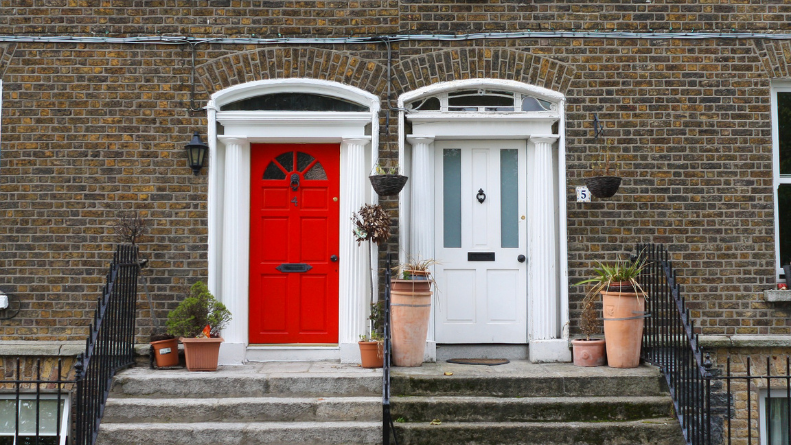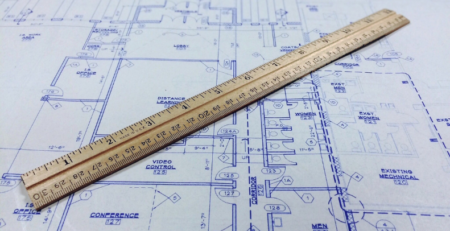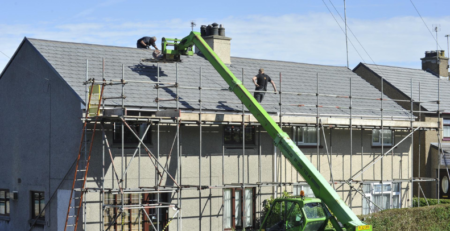Costly Home Repairs to Consider
Unnoticed issues such as blocked gutters, weak foundations, and leaking roofs can escalate into devastating failures that cost you a lot of money in home repairs. Whilst many unavoidable issues with a property are covered by a home warranty or insurance, regular maintenance will minimise the chances of costly repairs to your home.
The greatest approach to avoiding expensive home repairs is to do regular maintenance. You may save thousands in foundation repairs by spending a few hours on a ladder cleaning up your gutters. You might extend the life of your driveway by many years by applying sealant to it. For those looking to save money, consider these DIY home maintenance recommendations.
Consider your foundation
Tip: Your house’s foundation should be sloped away from the house to keep water out.
Water can be a disaster to homeowners. It penetrates through concrete, collects in basements, causes mould to grow, and drains bank accounts of hard-earned cash. If your foundation is weakening due to water, it might fracture, settle, or even spread havoc throughout the remainder of your home. A small fortune might be spent on foundation repairs and sealing.
As a preventative measure, keep water away from the foundation. The ground should slope gently away from the home foundations. Unless this is done, rainfall will accumulate around the foundation and take advantage of any structural weaknesses to leak into the home. An effective slope can be created by adding soil where there is standing water.
Gutter and downpipe clogs are often a source of frustration. It’s important to make sure that rainfall can readily flow from the roof into the gutter, then down the downpipes, and then away from the home. Add downpipe extensions that drain water several feet away from the foundation as a straightforward remedy to this problem.
Repairing the roof
Tip: Examine your roof for missing shingles, rips, and other damage several times each year.
The roof should not be forgotten while you are busy protecting your foundation from water damage. A similar vulnerability to leaks, decay, or worse, exists in both the foundation and roof. A few hundred pounds can restore lost shingles and small leaks, but if the damage is too significant or dangerous, you may need to replace the existing roof instead.

The way to help prevent expensive roof repairs is to keep on top of prevention and regular maintenance. As the saying goes, “An ounce of prevention is worth a pound of cure.” If you’re cleaning your gutters, you may as well take a look at your roof at the same time. You should also keep an eye out for missing or broken shingles, rips, and other signs of deterioration.
It’s important to examine your incomplete attic for moisture, mildew, algae, and leaks. Water leakage can be detected by bubbling paint on the walls or staining on the ceiling in an attic that has been completed. To avoid a total headache, it’s preferable to pay for rapid repairs than to let a gradual leak become a disaster.
Decking
Tip: Allow a few days to dry before applying a stain and/or resealing, once you have cleaned your deck.
Barbecues and picnics on a hardwood deck create a beautiful backdrop for summertime social gatherings. Wooden decking also adds value to your property. Routine maintenance must be performed to prevent decay or, even worse, totally falling apart. While the typical cost of maintaining a deck is only about £100 per year, the average cost of replacing it can be somewhere between £5,000 and £10,000. With such potential expense from such a small prevention cost, it’s best to avoid the aggravation and keep on top of maintenance.
Cleanliness is an important step in keeping a sound deck. After clearing away the leaves and twigs from between the gaps in the boards, use a deck cleaning product or even a homemade bleach and water mixture to scrub down the wood surfaces. After the deck has thoroughly dried, you can either add a wood stain to give it a new look or seal it. Your wood will not decay if it is sealed.
Every year, do a thorough check for signs of decay. Find weak places in the wood using a hard instrument like a screwdriver. A useful guide is that rot is evident if you can drive a screwdriver deeper than a quarter inch into the wood. Also, be sure to check out the pillars and joists under the deck. The lowest few inches of support posts, where they touch the ground and come into contact with water, should be checked for cracks and damage. It’s also worth considering using an experienced carpenter who can help you identify any issues.
Septic System
Tip: The cost of replacing a septic system can be expensive, so it’s wise to get it inspected on a regular basis.
A septic tank may be installed on your property if you reside outside the reach of a local sewer system. Similar to a wastewater treatment plant, septic tanks separate particles and fats from home waste before allowing the liquid to flow into a drainfield.
People who live in built up areas take for granted the extra care and maintenance that septic systems require. Failure to dump your tank or to flush the improper chemicals down the drain might lead to a system-wide failure. The expense of digging up and replacing the existing system is considerable.
It’s a good idea for an inspection of your septic system to be performed yearly. It’s recommended that you pump out your tank every 3 to 5 years, although it might be more often depending on your family. This is the case when you use a trash disposal in your kitchen sink.
The following indications might indicate blockages or leaks in your septic system in between routine checks. Backed-up toilets and bad smells in the house. Standing water or moist soil in the yard above the tank. A patch of vivid green grass above the tank.
The Driveway
Tip: Clean and use a sealer to keep your driveway looking its best.
Asphalt driveways will take a lot of wear and tear. It’s not enough that they have to resist the weight of heavy cars or caravans; they also have to endure the harsh elements of winter and summer. Asphalt driveways are likely to crack and disintegrate if left untreated. Constructing a new driveway is pricy, and you must also factor in the cost of removing the old one first.
Your asphalt driveway will last the longest if it is sealed against the weather. Rub down the driveway with a moderate mixture of water and laundry detergent while it’s dry outside. Apply a coat of driveway sealant once it’s dried. Allow the driveway at least a few days of rest after sealing, before driving on it.
ARE YOU READY TO START INVESTING?
Subscribe to our mailing list now for exclusive deals, investment guides and the latest information from the property market.







